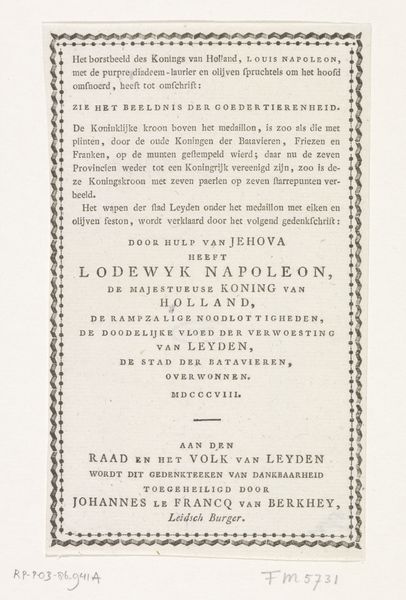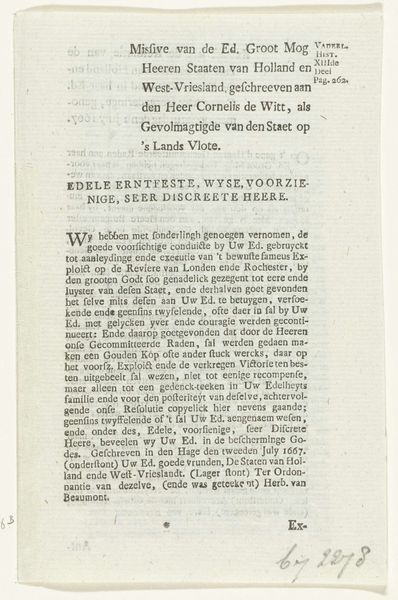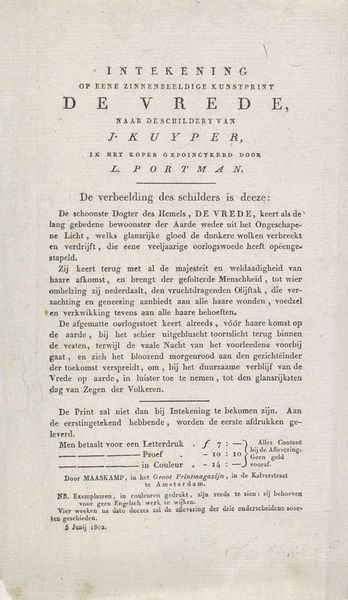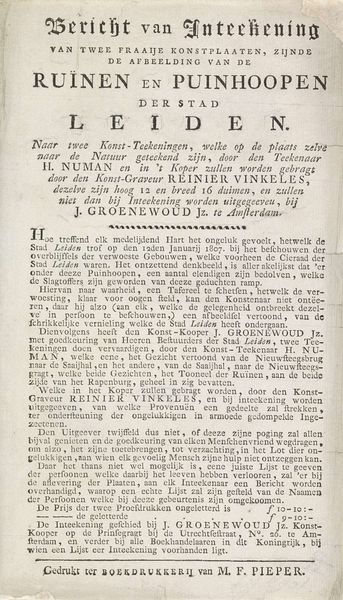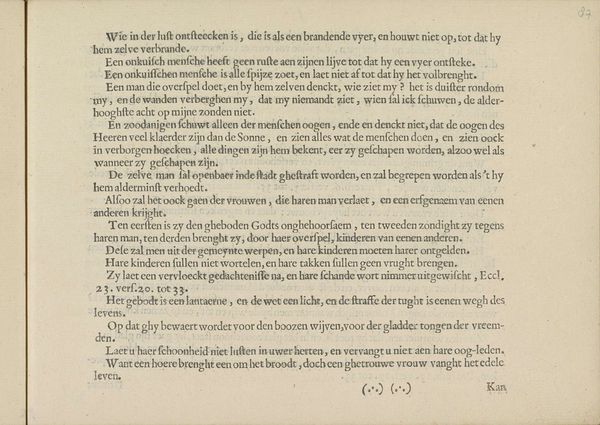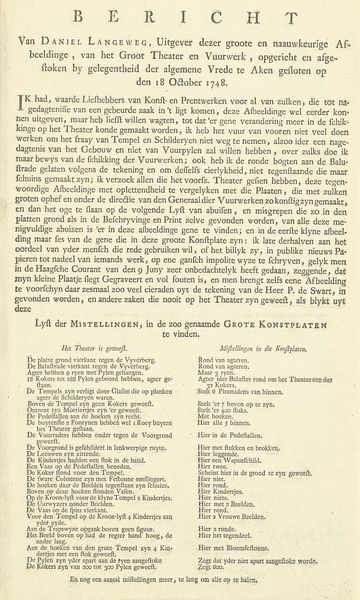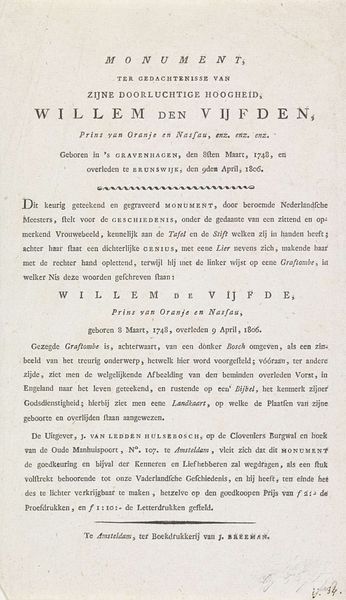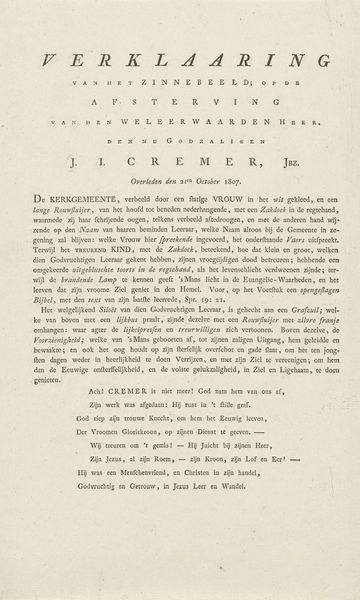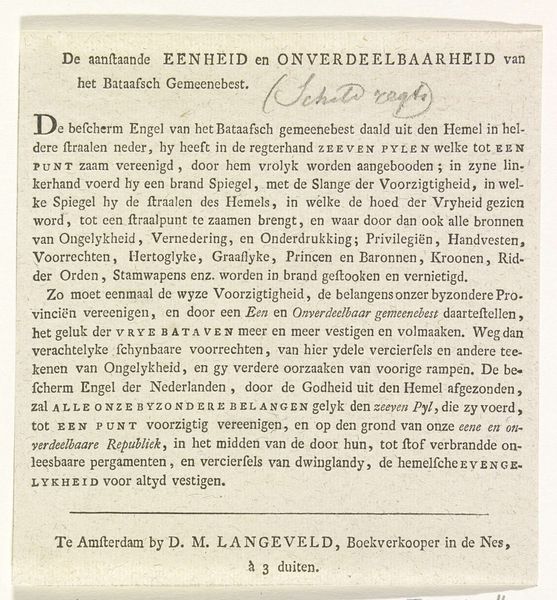
Algemene Wapening, decoratie op het Kadijksplein, 1795 (uitleg) 1795
0:00
0:00
print, typography, poster
#
neoclacissism
#
dutch-golden-age
# print
#
typography
#
poster
Dimensions: height 179 mm, width 138 mm
Copyright: Rijks Museum: Open Domain
Curator: Here we have "Algemeene Wapening, decoratie op het Kadijksplein, 1795 (uitleg)" by Dirk Meland Langeveld. It’s a printed poster from 1795, held at the Rijksmuseum. Quite text-heavy, wouldn't you say? Editor: Indeed, it’s practically all typography! My initial reaction is that it feels like a historical decree, weighty and important, even though I don't understand the Dutch. The design itself feels… austere. Stark, almost. Curator: That’s quite perceptive. It dates from a very specific moment, when the Batavian Republic was declared, influenced heavily by the French Revolution. The text is a call to arms, urging the Batavians—the Dutch—to awaken and reclaim their rights. It’s deeply rooted in Neoclassical ideals of liberty and civic virtue, which were trending in the 18th Century. Editor: Ah, so it's propaganda of sorts, stirring up revolutionary sentiment. The visual restraint makes sense then; it lends gravity to the message, pushing the written word to center stage, aiming for collective consciousness. The sparseness mirrors that "back to basics" thinking—powerful through clarity. It is far from an exuberant style we have come to expect of political messages today. Curator: Precisely. The piece demonstrates how printmaking served as a vital tool for disseminating political ideologies and rallying public support. Note the language itself, invoking images of freedom and contrasting them with tyranny. Editor: Looking closer, I am really taken by that strong symmetry, the balance. It gives it an official aura, as though this is some pronouncement carved into stone. So this print has less to do with beauty than with public function, with the museum space being less its "home" and more its current resting place after its initial task as propaganda. It had its fifteen minutes of fame out in the open. Curator: Absolutely. The intention was likely to create a sense of unity and purpose amongst the citizens. Consider its placement, perhaps pasted on public walls. It represents the intersection of art, politics, and social change in a tumultuous period. Editor: It is almost a pity, that a piece so connected to "being in the streets" is confined now to a museum! Thinking about its power, I’m reminded of how effective graphic design can be as a voice for change, stripped down to its core elements, simple typography! Curator: A potent reminder of the role art plays in shaping our shared histories and futures.
Comments
No comments
Be the first to comment and join the conversation on the ultimate creative platform.
